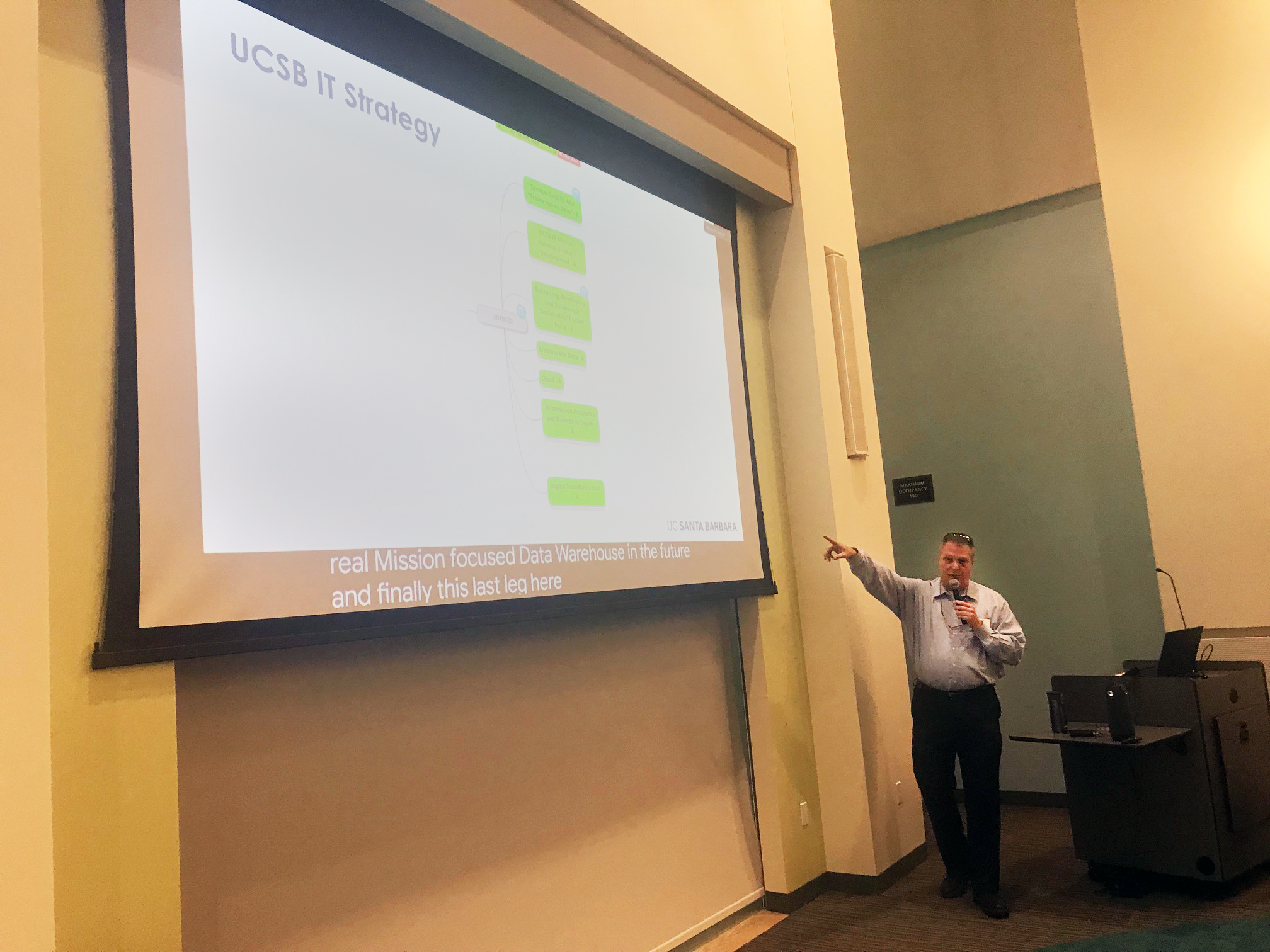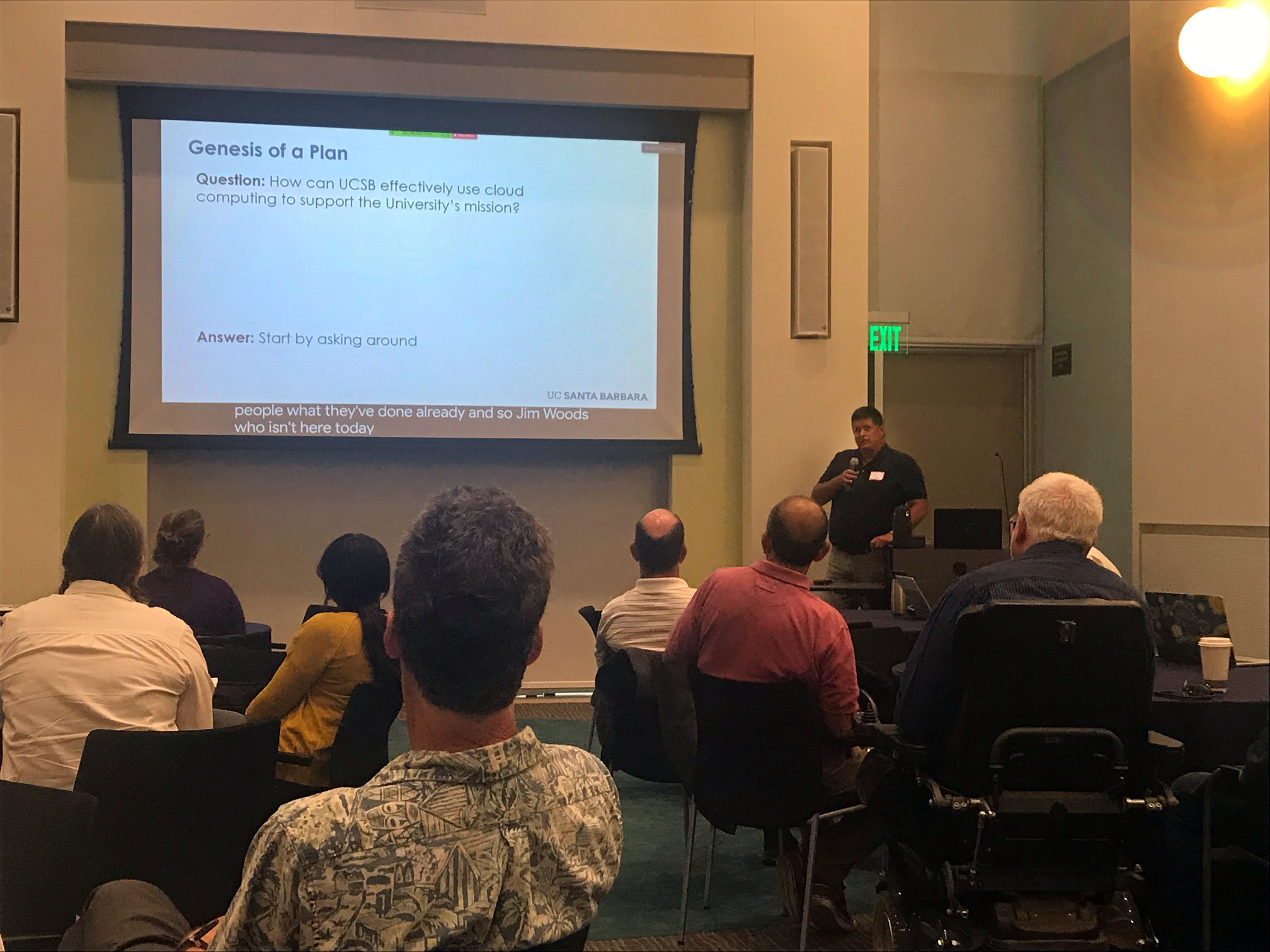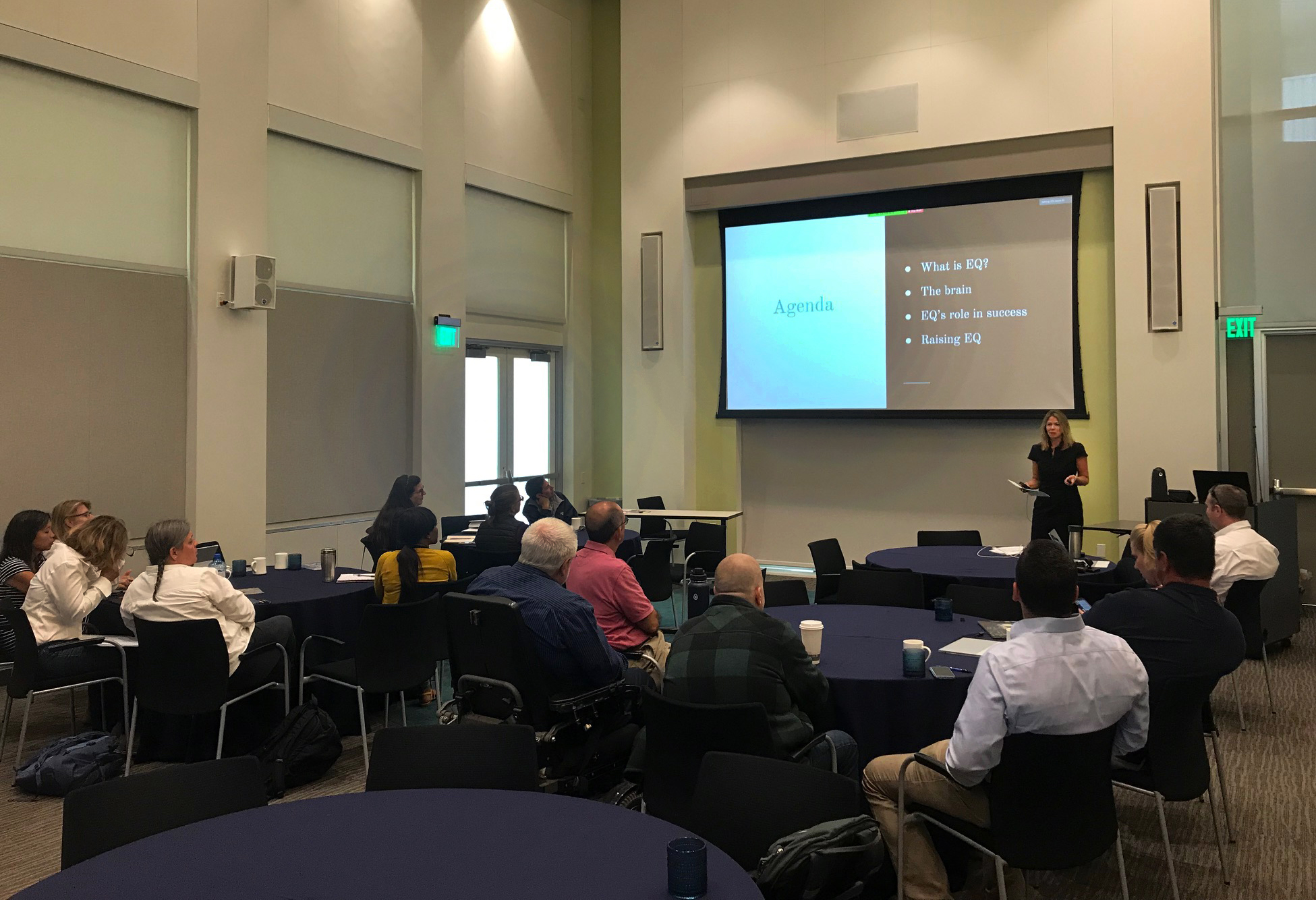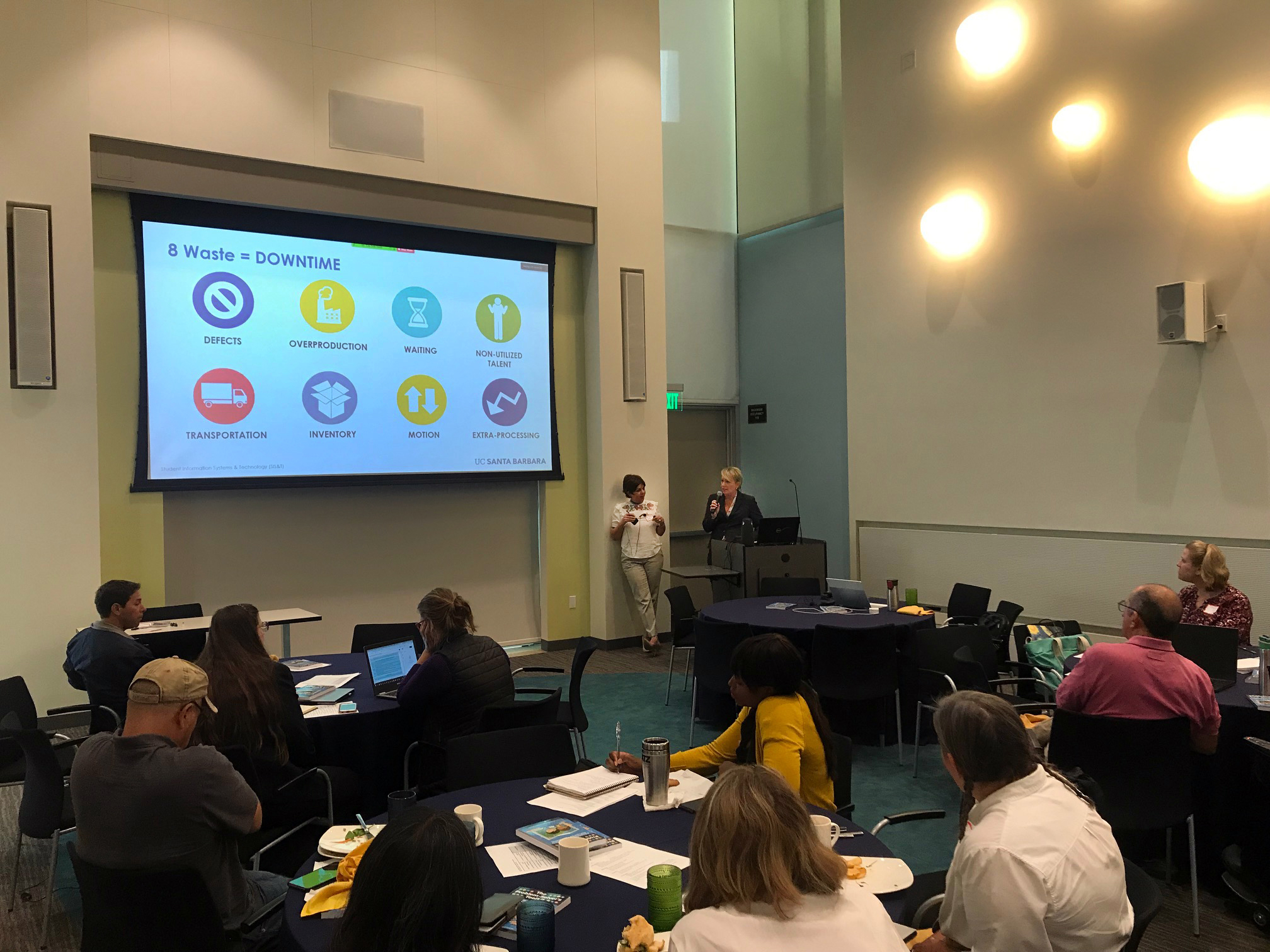What do the UCSB campus cloud strategy, unconscious bias, emotional intelligence, Lean Six Sigma, security, and RASS (Reliability, Availability, Security, Serviceability) have in common?
These topics headlined IT Foundations II, a five-hour learning, development, and networking event designed to establish shared vocabulary and contemporary context for all UCSB IT staff at the Betty Elings Conference Pavilion on August 28, 2019.
To make the most of the day, coordinators instructed attendees to watch seven videos prior to the IT Foundations event as part of the Flipped Classroom model. The videos, created with Powtoon, starred well-known UCSB IT staff members and discussed the basics of each topic. Watch the Flipped Classroom videos on the CIO website. With the Flipped Model, attendees received an introduction to the day’s topics ahead of time, which saved time and allowed for a more interactive, immersive experience that they could learn at their own pace.
The day began at 9 a.m. with an introduction from Joe Sabado, SIS&T Executive Director and Associate CIO for Student Affairs and IT Foundations coordinator, and the Associate Vice Chancellor for Information Technology and Chief Information Officer Matt Hall. The introduction included an icebreaker for which people in the room and on Zoom pitched movie ideas to the group. Nearly 30 IT staff from various departments attended in person along with 14 Zoom attendees.
Watch the full Zoom recording of the day’s sessions and/or review the master presentation deck.
Session I: Campus Cloud
After the introduction, Shea Lovan, Identity Collaboration Architect, presented about UCSB’s plans for Campus Cloud. This initiative includes gathering a group of “Cloud Champions” across campus. For his activity, Shea directed the table groups to budget for a cloud solution. His presentation begins at 54 minutes in the Zoom recording.
Session II: Unconscious Bias
Ricardo Alcaino, Director of the Equal Opportunity & Discrimination Prevention Office, presented on Unconscious Bias. His presentation discussed the ways in which explicit and implicit bias manifests and affects our decisions, and how those decisions affect others’ lives. Ricardo’s presentation begins 2 hours and 17 minutes into the Zoom recording.
Session III: Emotional Intelligence
Caroline Adams with the Office of the Ombuds then discussed Emotional Intelligence. Emotional Intelligence includes five areas: Self-Awareness, Self-Regulation, Motivation, Empathy/Social Awareness, and Social Skills/Relationship Management. Caroline focused on why Emotional Intelligence is important in the workplace. She then divided attendees into groups and assigned to them one of the five areas to implement in their own work. Caroline’s presentation begins 2 hours and 52 minutes into the Zoom recording.
Session IV: Lean Six Sigma
Lisa Klock, Process Innovation Program Manager with the College of Letters & Science IT (LSIT) and Tedi Tehrani, Management Services Officer (MSO) with Student Information Systems & Technology (SIS&T) then presented Lean Six Sigma. Lean Six Sigma methodology explores business processes and then works to minimize waste and variation while reducing defects. Lisa and Tedi’s presentation begins 4 hours and 17 minutes into the Zoom recording.
Session V: Information Security
Kip Bates, Associate Chief Information Security Officer with Administrative & Residential IT (ARIT), then presented on the basics of the NIST Cybersecurity Framework and the risks for the university if data is not secure. The group then discussed under which portion of the framework incidents fall. Kip’s presentation begins 4 hours and 41 minutes into the Zoom recording.
Session VI: Reliability, Availability, Serviceability, Security (RASS)
Allen Biehle, Director, IT Infrastructure, Security and User Support with SIS&T, presented RASS, which stands for Reliability, Availability, Serviceability, Security, and how we measure each. Our goal for RASS is to reach 99.999 (five nines), which equals only about 6 seconds of downtime per year. During the talk, Allen quizzed the group as to how many “nines” to which major applications (e.g., Google) adhere. His presentation begins 4 hours and 56 minutes into the Zoom recording.
The event received positive feedback overall; it was on time, organized with good content, and featured prepared presenters.
“I have gained a lot of information. I’m already looking forward to attending IT Foundations III,” Tedi said.






